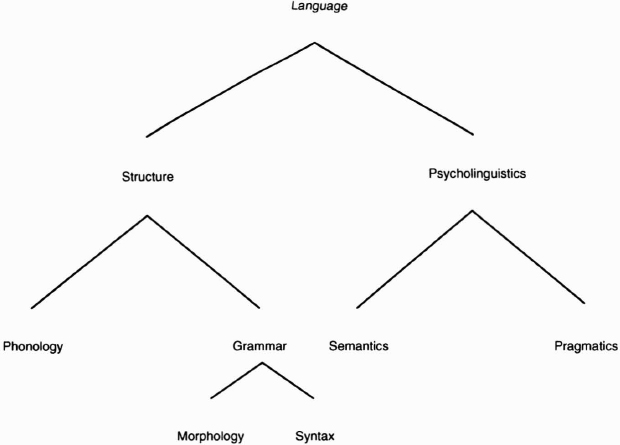The Structure of Language
Language is “a system of rules which relate sound sequences to meanings” (Hayes, et al., 1997). The rules regarding sound sequences and their meanings are described in the field of linguistics. Within linguistics there are structural systems that are pertinent to the field of human-computer interaction. Human-computer interaction also shares a common foundation—cognitive psychology—with another area of linguistics, that of psycholinguistics. Psycholinguistics is concerned with issues of language comprehension and is considered in this chapter. Figure 4.3 illustrates the relationship between these systems. Each system is defined and described in this chapter.
“Language is the interpreting system of all other systems, linguistic and non-linguistic.”
Emile Benveniste, Semiotics: An Introductory Reader

Figure 4.3 Systems of language.
Structural Systems
The two primary structural systems of language are phonology and grammar. These structural systems provide us with ways to analyze human language. Phonology is the study of language sounds and how they are created by humans. Grammar combines morphology and syntax to arrive at a set of rules regarding the technical structure of language. Morphology is the study of word structure, while syntax is the study of sentence structure. These structural systems provide important information for the input and output of ...
Get Designing Effective Speech Interfaces now with the O’Reilly learning platform.
O’Reilly members experience books, live events, courses curated by job role, and more from O’Reilly and nearly 200 top publishers.

